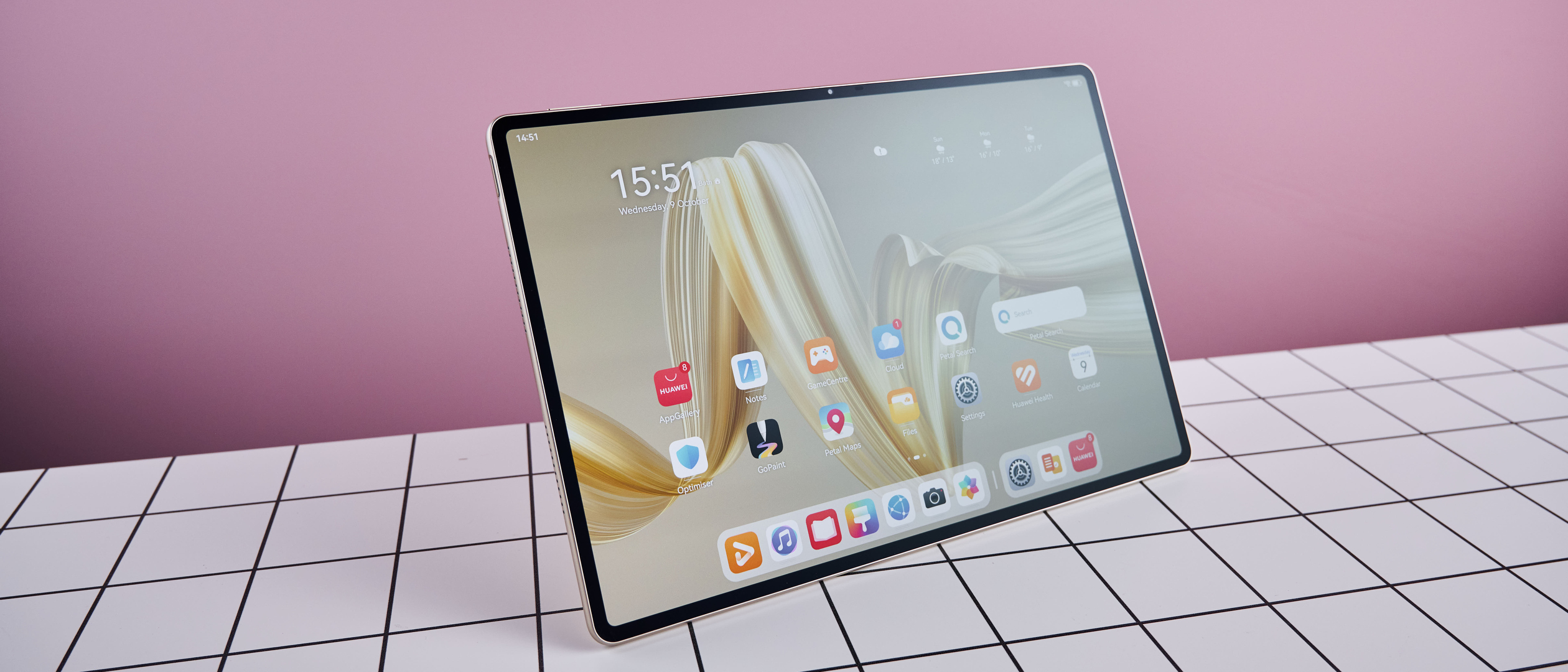TechRadar Verdict
The MatePad Pro PaperMatte Edition claims to offer a superlative creative experience, thanks to its PaperMatte OLED display and capable performance. It certainly does stand out in these regards, making it a joy to view content and draw on with Huawei’s M-Pencil 3. However, using it with the Glide Keyboard for light productivity is less effective, and the various software and app issues mean you’re probably overpaying if you just want a tablet for doodling.
Pros
- +
Superb PaperMatte display
- +
Great to use with stylus
- +
Capable performance
Cons
- -
Not the best for general productivity
- -
Software and app issues
- -
Not cheap
Why you can trust TechRadar
Huawei MatePad Pro PaperMatte Edition: two-minute review
The Huawei MatePad Pro PaperMatte edition is a tablet aimed at creatives, with an emphasis on illustration, thanks in no small part to the Tandem OLED PaperMatte display.
The display is indeed impressive: it’s vibrant while at the same time being easy on the eye. Video, photos, drawing and text are all equally displayed vividly and clearly. There’s a slight graininess and soft-focus effect to the picture, but I didn’t find either detracted from the experience.
The gold finish on the PaperMatte Edition is subtle with a scratchy pattern that might not be to everyone’s taste. However, I found it suited the overall design well. I was also impressed by the build quality, which is up there with some of the best tablets, with every panel and join being close to perfect. The power and volume buttons are also of a similarly high standard.
The Glide Keyboard case, however, is more of a mixed bag. While it fits well onto the MatePad Pro PaperMatte Edition, opening and closing it is difficult, thanks to the extra hinge mechanism that’s necessary to house the M-Pencil 3 charging compartment. It was always awkward to open and close. And while the keys and trackpad feel premium, the material around them appears to show signs of peeling, which spells trouble for its longevity. The case also fails to protect the camera.
One of the major issues with the MatePad Pro PaperMatte Edition, though, is related to software. Google’s lack of support for Huawei devices means its apps aren’t natively supported, requiring workarounds that are hit and miss in their success. While I was able to get Google apps installed via GBox, they didn’t always perform as expected, and games failed to work outright. Huawei’s official storefront is frankly no substitute for the Google Play Store, as it’s severely limited in scope.
Huawei’s own apps included here can be quite useful and perform well. GoPaint and Petal Clip are very well designed creative apps, with the former letting the M-Pencil 3 shine. However, others have their issues (outrightly failing to work in the case of the Music app).
Gestures both on the touchscreen and on the trackpad are responsive and allow for useful functionality. Typing with the Glide Keyboard is fine, although some software issues hamper the experience. Air Gestures, however, failed to work consistently enough to be useful at all. The M-Pencil 3 stylus offers the most enjoyable way to interact with the tablet: it provides smooth, seamless strokes and although there’s a slight dragging sensation, it isn’t enough to detract from its natural feel.
Sign up for breaking news, reviews, opinion, top tech deals, and more.
Battery life on the MatePad Pro PaperMatte Edition is impressive, lasting several days from general and varied use. Super charging is also available, getting you back up and running relatively quickly: it took me about two hours to get from 5% to full capacity.
Huawei devices are always tricky to recommend. Due to the unique restrictions placed upon the Chinese brand, the MatePad Pro PaperMatte Edition doesn’t function like your typical Android tablet, with various app restrictions being enforced. However, if you can get past that, or you only want to spill your creative expressions onto a glorious display, then this might be for you. However, at this price, it’s hard to recommend it wholeheartedly given its various foibles.
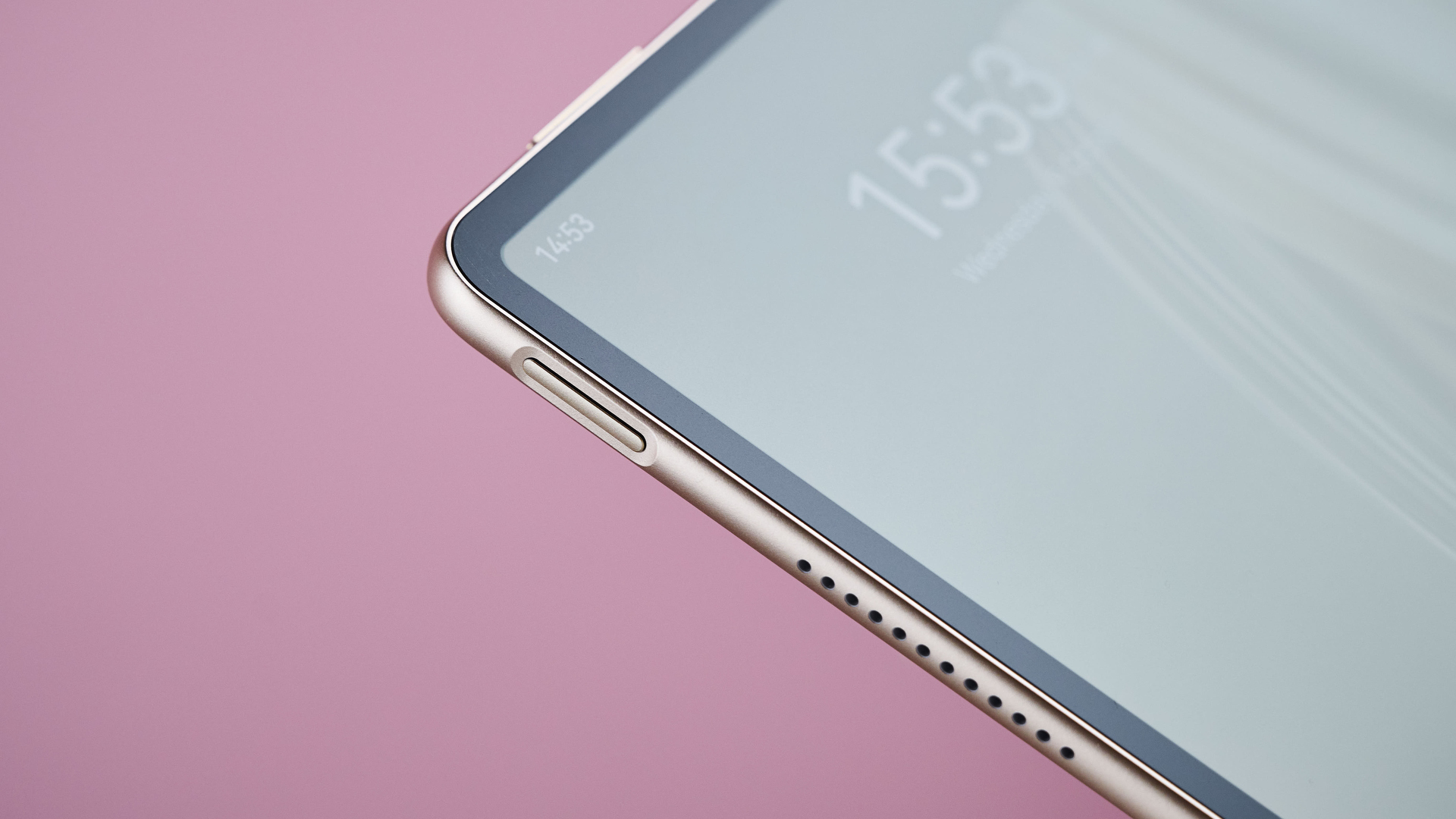
Huawei MatePad Pro PaperMatte Edition review: price and availability
- £799 (about $1,069 / AU$1,553)
- PaperMatte edition is gold only
- Same price as the latest iPad Air
The MatePad Pro PaperMatte Edition costs £799 (about $1,069 / AU$1,553) and only comes in gold. There’s also a non-PaperMatte edition in black, with a lower capacity (256GB rather than 512GB), for £699. Both versions include the Glide Keyboard. Huawei is currently offering UK customers a promotion of £100 off, as well as a free inclusion of the M-Pencil 3, on its own storefront.
Compared to the best tablets around, the MatePad Pro PaperMatte Edition sits somewhere in the middle in terms of price. iPad Pro models can certainly be more expensive, but they do pack in far greater power. And the latest iPad Air 13-inch starts at the same price as the MatePad Pro PaperMatte Edition, although that model will only get you 128GB of storage, and all only have 8GB of RAM.
In the wider realm of Android tablets, again the MatePad Pro PaperMatte Edition occupies the center ground. Samsung Galaxy tabs can exceed the MatePad Pro PaperMatte Edition in price, but there are also budget offerings, such as the OnePlus Pad Go, although this model isn’t compatible with a stylus, nor is there an official keyboard case for it.
Huawei MatePad Pro PaperMatte Edition review: specs
| Starting price | £799 (about $1,069 / AU$1,553) |
| Operating system | HarmonyOS 4 |
| Chipset | Kirin T91, Octa-core |
| Memory (RAM) | 12GB |
| Storage | 512GB |
| Display | 12.2-inch 2800 x 1840 Tandem OLED PaperMatte |
| Weight | 508g |
| Battery | 5000mAh (7.82 V), 39.10Wh |
| Charging | HUAWEI SuperCharge, up to 20 V/5 A |
| Cameras | 13MP rear, unspecified front |
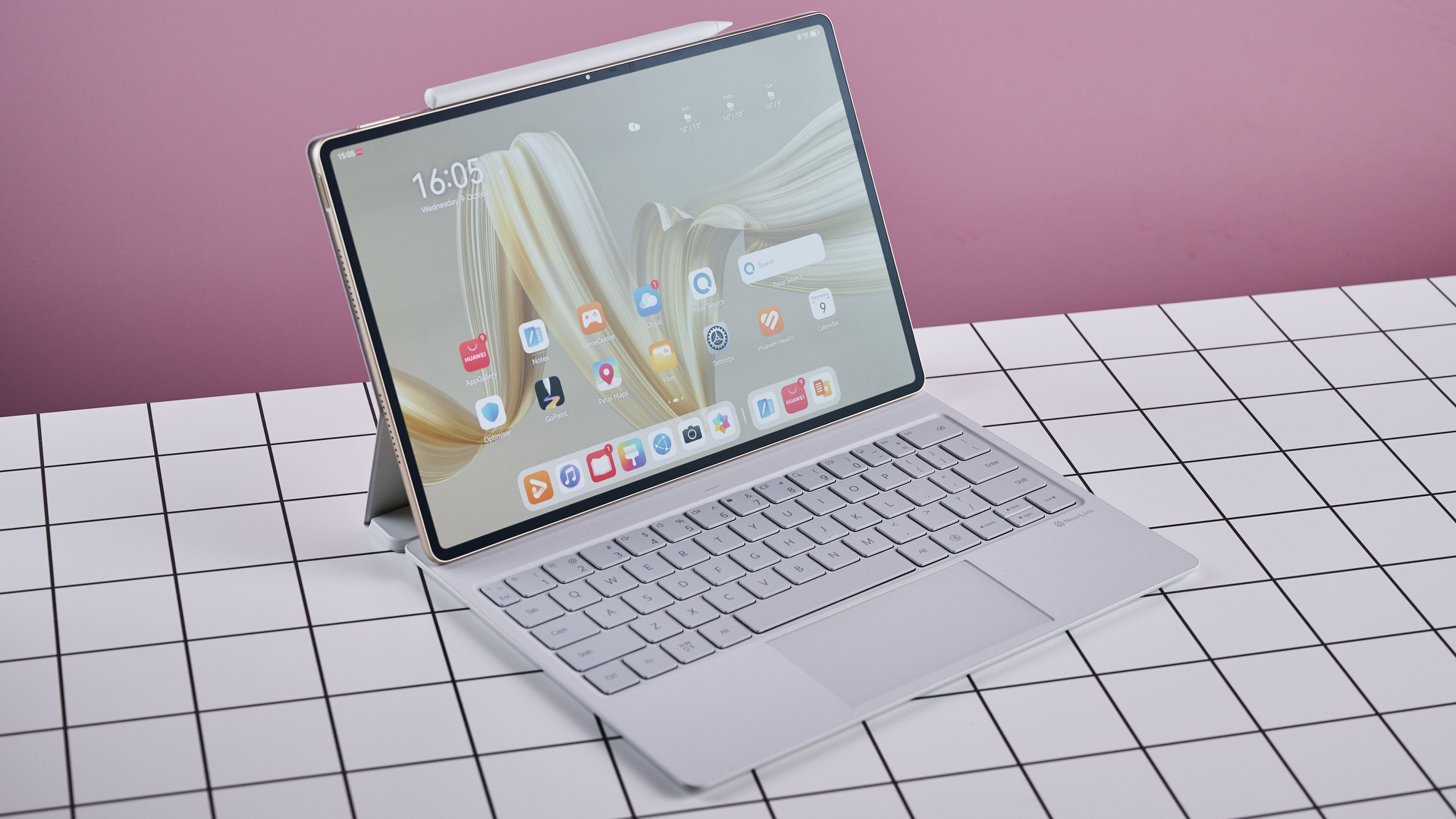
Huawei MatePad Pro PaperMatte Edition review: display
- Vivid and clear
- No glare
- Slightly grainy texture
The 12.2-inch OLED PaperMatte display is very clear, making it easy to read text and view colorful imagery. However, there is a slight graininess to the finish, which becomes more apparent the closer you are. There’s also a slightly softer focus compared to other tablet displays, meaning it isn’t as pinpoint sharp.
Personally, though, I found it to be vibrant enough to view HD and 2K content without issue, thanks in part to its 2800 x 1840 resolution. Reading text is very easy on the eye, thanks to the PaperMatte technology and its high contrast, lack of harsh backlighting (despite the 2,000 nits maximum brightness) and slight softness to the rendering. The matte finish also means glare isn’t a problem for the MatePad Pro PaperMatte Edition; no matter where I tried it, it would always present a visible image.
The bezels are also very thin, with the display making full use of its allotted real estate. There’s also a distinct lack of smudging, as fingerprints leave next to no trace, as they can on other tablet displays.
The screen is silky smooth to the touch, with finger swipes being effortless to perform. The same is true when using Huawei’s M-Pencil 3: scribbling and drawing with it is a joy, although there is the slightest hint of scratchiness at times but not enough to ruin the experience. Overall, strokes are fluid and precise – thanks in part to the 144Hz refresh rate – and register exactly where you want them to.
- Display score: 4 / 5

Huawei MatePad Pro PaperMatte Edition review: design
- Unique gold finish
- Thin but relatively heavy
- Awkward Glide Keyboard folding mechanism
The MatePad Pro PaperMatte Edition sports a minimal design, fairly typical of most tablets. Its gold finish has a scratch-mark pattern that may divide opinion, but I don’t think it’s too garish. Overall, the fit and finish is excellent, and I spotted no flaws in the construction, while the buttons feel premium and operate with precision and ease.
In the hand, you do feel the weight of the MatePad Pro PaperMatte Edition, but it’s still just about within reasonable bounds; you shouldn’t have a problem carrying it for long stretches. However, the edges are quite sharp, making it uncomfortable to hold, so this is a tablet better used on a desktop.
The profile of the MatePad Pro PaperMatte Edition is very thin, which adds to its portability credentials. The same is true even with the Glide Keyboard attached, which is equally as slender. That slenderness, however, comes at the detriment to the camera, as the lenses protrude slightly beyond the bounds of the Glide’s case, offering them no protection against slams or drops.
Perhaps the biggest weakness of the Glide Keyboard, though, is its folding mechanism. There’s a slot to accommodate and charge the M-Pencil 3 that features a double-hinge array, so when folded flat, the stylus is stowed away safely. However, that hinge is very stiff and needs to be opened up for the tablet to sit upright when in use. This makes for awkward opening and closing and, even after a week with it, I still couldn’t operate it smoothly.
The Glide Keyboard magnet that holds the MatePad Pro PaperMatte Edition upright offers two viewing angles. While it’s strong, a word to the wise: when laying down, make sure your knees aren’t too high if you plan on resting the tablet on them, otherwise the weight of the tablet will force it shut.
Although the Glide Keyboard is well made for the most part, the material around the keyboard itself didn’t feel premium, and even appeared to be losing adhesion, as air pockets were visible beneath it in places, which doesn’t bode well for its durability. The trackpad, though, is smooth and durable, and just the right size to be practical without eating into the keyboard real estate.
The M-Pencil 3 is also well designed, taking cues from the Apple Pencil with its all-white finish and indentation on one side. As well as being stored in its aforementioned slot in the Glide Keyboard, it also clips magnetically to the top of the MatePad Pro PaperMatte Edition, although it won’t charge in this position. This is far from convenient, as retrieving the M-Pencil 3 from the charging slot is awkward: you can either fish around the back of the tablet while it’s standing upright, or prise up the bottom from its magnetic hold to retrieve it. These are both less than elegant solutions.
- Design score: 3 / 5
Huawei MatePad Pro PaperMatte Edition review: software
- Creative native apps
- Some glitches
- Support for popular apps problematic
The selection of pre-installed software on the MatePad Pro PaperMatte Edition verges on excessive, but the hit to performance and storage capacity is thankfully negligible, and isn’t as bad as the bloatware present on other Android tablets.
Huawei’s own suite of apps on the MatePad Pro PaperMatte Edition is, unsurprisingly, catered to the artistically minded, geared towards getting the most out of the M-Pencil 3. GoPaint is one of the standouts, despite being hidden away in a folder on the second page of the home screen. Anyone who’s dabbled with Procreate will be in familiar territory here, as it offers a near-identical interface and feature-set.
There are also two notes-based apps: Notes and Notepad. These allow for more drawing and scribbling, and come with some useful templates, including even music staves. However, if you’re looking to type your notes, then neither of these apps are fit for purpose, with a measly text box tool being your option. Considering the abundance of third-party note taking apps out there, though, this isn’t much of a problem.
There’s also Petal Clip, a surprisingly in-depth photo and video editing app. This allows you to create animations from images and from videos, with various adjustments, filters and animations to play around with. There are also templates for creating short clips, mainly themed around romance for some reason, but are effective nonetheless for effortlessly livening up content.
Disappointingly the browser app is pretty basic, even lacking common keyboard shortcuts many will be accustomed to. Still, sites do load promptly and general speed isn’t far behind more popular variants. Huawei’s other first-party apps fared less well during my time with the tablet, with glitches occurring frequently. The Music app, for instance, refused to play any music and kept crashing every time I tried to do so.
The real drawback of Huawei devices, though, is the lack of native compatibility with Google and many other apps, due to western sanctions on the Chinese brand. Huawei does have its own AppGallery storefront, but the lineup is sparse, and the Google apps it offers are not the true apps; instead, they run on a platform that essentially loads their mobile site counterparts.
There are various repositories available from which you can install Google and other apps absent from Huawei’s ecosystem, but I had limited success with these, as many refused to install or run, or instead ran but stopped working shortly afterwards.
GBox proved to be the best solution to circumvent these restrictions. This is an environment that claims to get Google apps working on Huawei devices. Once I downloaded the app from the GBox website, I was able to install and use the Google Play Store, along with all the Android apps you know and love.
However, even here, apps downloaded via this method aren’t flawless. In Google Docs, for instance, I was unable to scroll pages, with the typical two-fingered drags resulting in highlighting text instead. Spellcheck as you type also appeared to be missing, and there were times when single taps of the space bar failed to actually create a space. These drawbacks really hamper productivity.
More generally, some apps refused to appear on the home screen once downloaded from the Google Play Store. Also, various games I installed from the Play Store failed to work, either instructing me to download them from the device’s official app store (where they weren’t available), or that a store key was missing.
Also, Google Chrome isn’t available from GBox either. You can download it via the Google Play Store, but after installing, it again requests installing from the AppGallery – and, again, Chrome isn’t on there.
Another issue is that split-screen functionality isn’t available between two apps downloaded from GBox (or the Google Play Store via GBox). You can split a screen between a GBox app and a non-Gbox app, but it's a serious setback to those who want to focus on productivity that two GBox apps can’t be stacked side-by-side.
What does work better, though, is floating windows. I found that any app could be turned into a floating window, allowing you to put it in the corner and keep it on top while other apps are open, or minimize it to a small tab at the side of the screen, ready to be expanded again. Floating windows also offer a workaround for apps that only support portrait mode, as it allows you to view them the right way up in landscape – you won’t be able to make them fullscreen, but you can still resize them to a large degree.
- Software score: 2.5 / 5
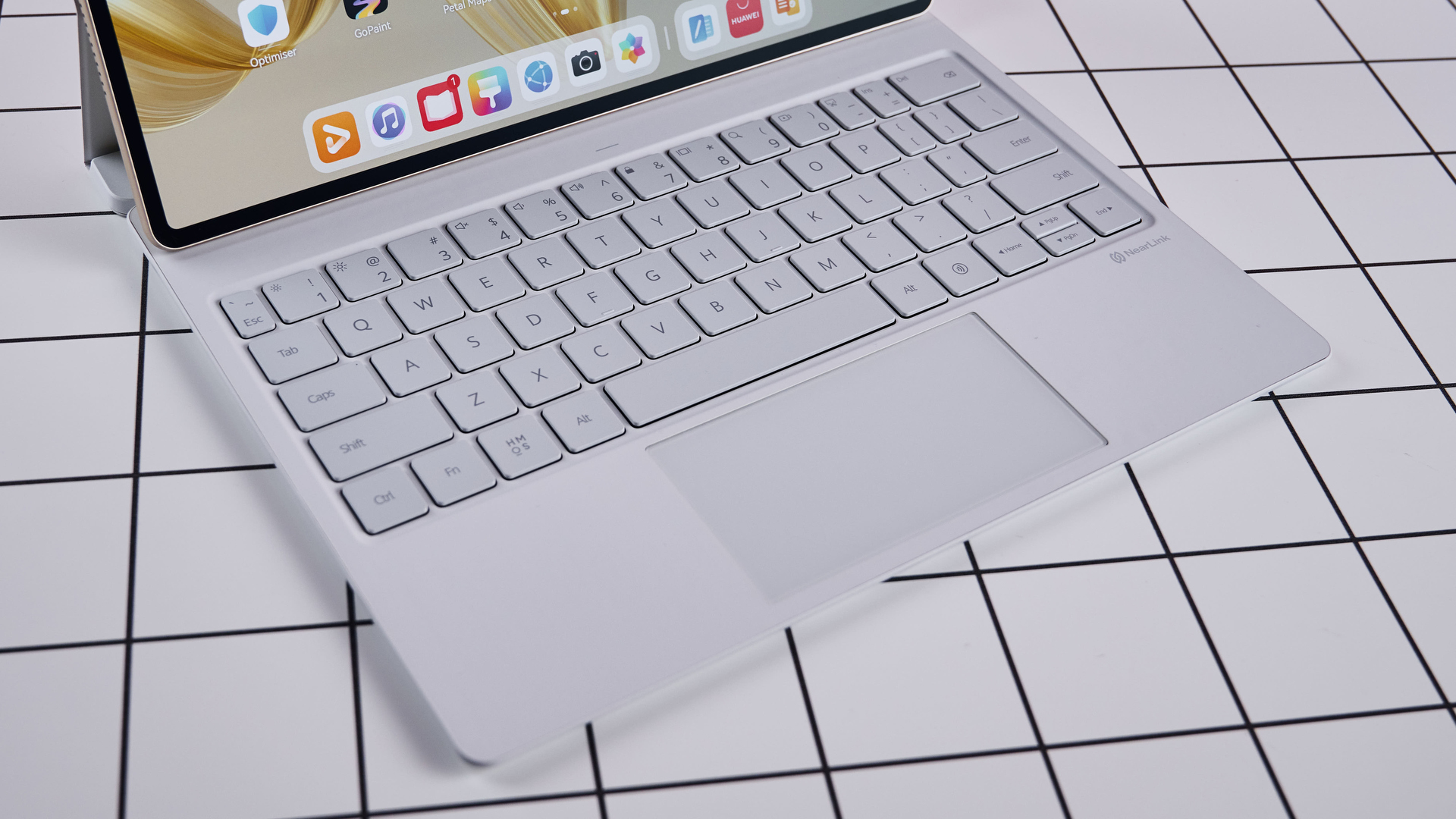
Huawei MatePad Pro PaperMatte Edition review: performance
- Great for creativity
- So-so productivity credentials
- Gestures are a mixed bag
In terms of speed, the Huawei MatePad Pro PaperMatte Edition is plenty powerful enough to handle light productivity, entertainment and creativity tasks. The Kirin T91 Octa-core chip and 12GB of RAM make for seamless performance for the most part, with only the occasional slowdown. Google Docs and Sheets were swift when creating and editing in these apps, while streaming video on Twitch, Youtube and Netflix was also a close to flawless experience.
The sound quality was also a pleasant surprise. As with most tablets, it won’t blow you away, but audio on the MatePad Pro PaperMatte Edition was more impactful than I was expecting, creating an admirable sense of space. It also rendered all frequencies clearly while keeping distortion at bay.
When I did manage to install games that actually worked, they performed well too. PUBG Mobile ran smoothly, albeit at a low frame rate and with compromised graphics, but it was still perfectly playable. There was no discernible lag or stuttering, and the MatePad Pro PaperMatte Edition didn’t heat up in the process either.
Typing is mostly a pleasant experience on the Glide Keyboard, thanks to the wide keys and damped feel. On screen, however, there are few issues. The cursor doesn't move forward when you press space, although a space is registered once you continue typing, which can be a little disconcerting. There were also occasions where the predictive dialog box obscured the screen. And despite what I did to change the keyboard layout, the @ symbol was nearly always mapped to the quote marks key, rather than the 2 key.
The usual trackpad gestures are present. You can swipe with two and three fingers to perform various actions, from navigating menus and pages to switching apps and returning to the home screen. You can also zoom by performing a pinching movement. However, I was disappointed at being unable to drag items around by merely tapping the trackpad; instead, you have to press down the trackpad first before you can drag, which is far less practical when moving items large distances across the screen.
Some mouse gestures also fail to emulate their touchscreen counterparts with the same effectiveness. For instance, opening the multitask view by swiping inwards from the right on the trackpad did several times result in me going back on the web page I had open at the same time, which is more than inconvenient.
As for those touchscreen gestures, they work more seamlessly. They are responsive and smooth, and there are some unique gestures available too. Along with the usual two and three finger actions, there are also knuckle taps, a handy addition that allow you to take screenshots or perform other actions which are configurable in the settings. Again, these work accurately and seamlessly.
The same can’t be said about Air Gestures, however, which are meant to recognize the opening and closing of your hand in front of the camera to perform certain actions. Most of the time, though, I failed to get these to work, no matter where I positioned my hand.
- Performance score: 3.5 / 5
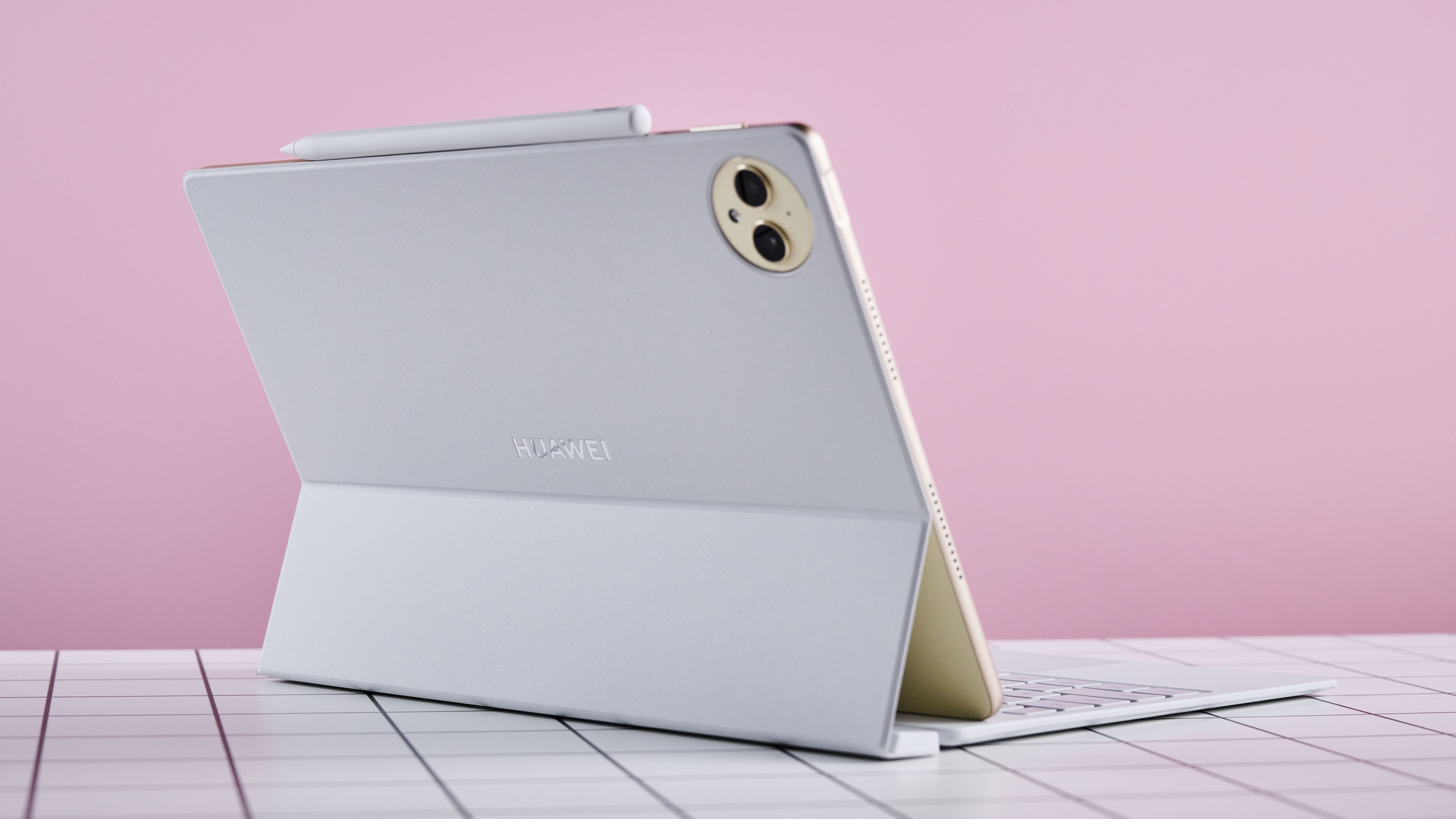
Huawei MatePad Pro PaperMatte Edition review: battery
- Several days of use
- Quick charging
- ePaper tablets have it beat, though
The Huawei MatePad Pro PaperMatte Edition features a 5,000 mAh battery, which is impressively long lasting. During my tests, it went for several days while performing typical user tasks. In comparison, the latest iPad Air lasted eleven and a half hours according to our tests, although that figure halved when dealing with more intense tasks. Charging the MatePad Pro PaperMatte Edition is a quick process too, thanks to its super charging feature. Charging from 5% to 100% took about two hours.
If you really want something that will last, the reMarkable Paper Pro can go for two whole weeks between charges. That is an ePaper tablet, though, explicitly designed for reading and note-taking, and not much else.
- Battery score: 4 / 5
Should you buy the Huawei MatePad Pro PaperMatte Edition?
| Attributes | Notes | Rating |
|---|---|---|
| Display | The OLED PaperMatte display displays all content clearly and vividly, and is excellent to draw on. Its slight soft focus and graininess are minor drawbacks. | 4 / 5 |
| Design | Thin but heavier than you might expect. Build quality is superb, although there are frustrating ergonomic issues with the Glide Keyboard. | 3 / 5 |
| Software | Whether it's fair or not, Huawei devices are hamstrung by the lack of official support for Google apps, which creates issues. Its own apps can be good, but there are some bugs. | 2.5 / 5 |
| Performance | It’s fast and seamless for the most part, and creatives are well served here. Gestures and keyboard performance are also good, but productivity isn’t always its strong suit. | 3.5 / 5 |
| Battery | You’ll get several days of normal use out of it, and super-fast charging means you’ll be up and running again in about two hours. | 4 / 5 |
Buy it if…
You want to draw
The optional M-Pencil 3 is very responsive and smooth, making it a joy to get creative with the MatePad Pro PaperMatte Edition.
You want a clear display
The PaperMatte display is vivid and clear, making it easy to read text and watch video content.
Don’t buy it if…
You want good app availability
Google and many other apps don’t work natively on the Huawei devices, and the workarounds are far from perfect.
You want powerhouse performance
Although it's perfectly capable of servicing your everyday needs, those after more productivity pedigree may want to look elsewhere.
Huawei MatePad Pro PaperMatte Edition: Also consider
| Header Cell - Column 0 | Huawei MatePad Pro PaperMatte Edition | OnePlus Pad Go | Apple iPad Air 13-inch (2024) |
|---|---|---|---|
| Price | £799 (about $1,069 / AU$1,553) | £269 | $799 / £799 / AU$1,299 |
| Base storage | 512GB | 128GB | 128GB |
| Screen size | 12.2-inch 2800 x 1840 Tandem OLED PaperMatte | 11.35-inch LCD (LTPS) | 13-inch LED Backlit (2732 x 2048) IPS LCD |
| Chipset | Kirin T91, Octa-core | MediaTek Helio G99 | M2 |
| Battery | 5,000mAh (7.82 V), 39.10Wh | 8,000 mAh | 36.59‐watt‐hour |
| Charging | HUAWEI SuperCharge, up to 20 V/5 A | 33W | Not specified |
| Cameras | 13MP rear, unspecified front | 8MP main, 8MP front | 12MP wide main, 12MP ultrawidefront |
| OS | HarmonyOS 4 | OxygenOS w/ Android 13 | iPadOS 17.5 |
Apple iPad Air 13-inch (2024)
For the same price as the MatePad Pro PaperMatte Edition, you could get the entry-level model of the latest 13-inch iPad Air. You’ll only get 8GB of RAM and 128GB of storage, but in our Apple iPad Air 13-inch (2024) review, we noted its incredible performance across all areas, including creative and artistic workloads. Plus, you also get access to Apple’s excellent app selection and ecosystem. If you already have an iPhone, an iPad certainly makes more sense for cross-platform functionality.
OnePlus Pad Go
If you’re after a budget-friendly tablet and don’t intend on using a stylus, the OnePlus Pad Go is a worthy choice. Performance is very good at this price, and it doesn't suffer from the same Google app compatibility issue as Huawei products. The display is super sharp for viewing content with ease, but, as we noted in our OnePlus Pad Go review, it can be quite reflective, making darker images hard to see. There’s no official keyboard case available for it either.
How I tested the Huawei MatePad Pro PaperMatte Edition
- Tested for one week
- Tried preinstalled and third-party apps
- Performed various tasks
I tested the MatePad Pro PaperMatte Edition for one week. During that time, I performed various tasks, including general browsing, light productivity, and gaming. I used it with and without the Glide Keyboard.
I made sure to try out as many of its features as I could, from the preinstalled apps to its overall functionality. I tried where I could use third-party apps, although this proved difficult at times due to the restrictions in place over Google apps on Huawei devices.
One aspect I was unable to test was its screen mirroring and projection capabilities, since these are only compatible with certain Huawei and Honor devices running HarmonyOS, EMUI 10 or Magic UI 3 or later.
Read more about how we test.
First reviewed October 2024

Lewis Maddison is a Reviews Writer for TechRadar. He previously worked as a Staff Writer for our business section, TechRadar Pro, where he gained experience with productivity-enhancing hardware, ranging from keyboards to standing desks. His area of expertise lies in computer peripherals and audio hardware, having spent over a decade exploring the murky depths of both PC building and music production. He also revels in picking up on the finest details and niggles that ultimately make a big difference to the user experience.
